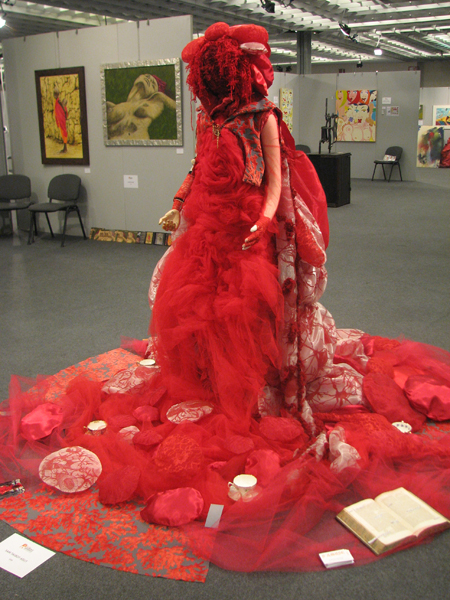Author | Annie Malamet | Visual Arts Editor
I am always a bit cautious when I enter a setting such as Artexpo, which took place this past weekend at Pier 94. Given the denizens of the upper west side, the bourgie, casual art collectors that populate the scene scouting out an obscenely priced painting that will match their home décor, I feel it would be remiss of me not to approach with a critical eye. Upon admission, I admit I was overwhelmed with the feeling that I was witnessing some kind of “art factory” where works are produced to make money rather than to contribute to some cultural discourse; booths boasted flashy logos fashioned from artist’s names and the prices reached sky high (you have to admit that a photo of Nelson Mandela going for $25,000 is pretty ironic). The occupants of one booth told me they could make me a piece in any size or color I wanted. I know Andy Warhol would probably be proud, but I have a hard time believing these particular artists were going for that effect. I did find a few artists that interested me, but this highlight reel will reveal more about my personal taste than of the overall atmosphere of the fair itself.
The first artist that caught my eye was Russian painter Daria Bagrinsteva. I wasn’t convinced by all of Bagrinsteva’s work, but a collection of still lives featuring colorfully rendered junk food against a gold background were of interest to me. The elevation of a sugary donut or a messy hamburger set against a byzantine gold ground demonstrates a tension between high and low culture that is humorous when seen in the context of the fair itself. The image of the painting here really does not do it justice; in person the donut frosting glistens and the gold paint looks expensive.
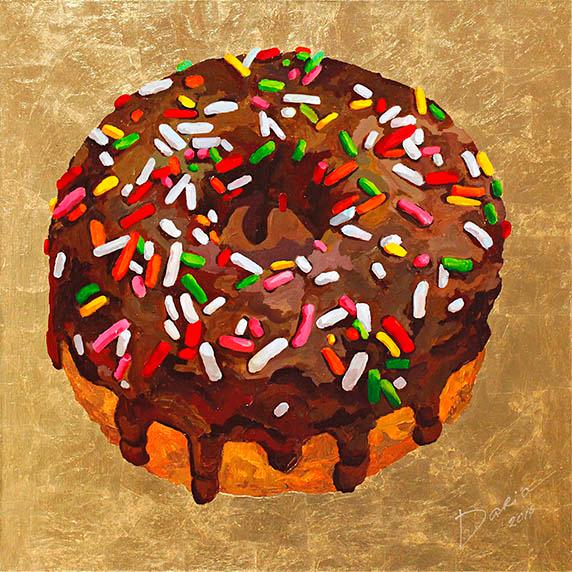
Most of the work at Artexpo was figural paintings. One booth in this vein that stuck out to me was Italian artist Elisa Anfuso’s. Her paintings are photo-realistic and feature young girls enacting staged, strange tableaus. Anfuso borrows from the surrealists by using a naturalistic style to approach alternate realities and planes of being. I get the sense that Anfuso, like the surrealists, seeks to explore dream states. She uses recognizable religious or fairytale characters, such as the Virgin Mary or Alice in Wonderland. But beyond the examination of dreams is a heavy political thread tying the works together: Anfuso uses imagery that recalls issues of Italian nationalism and religious fervor.
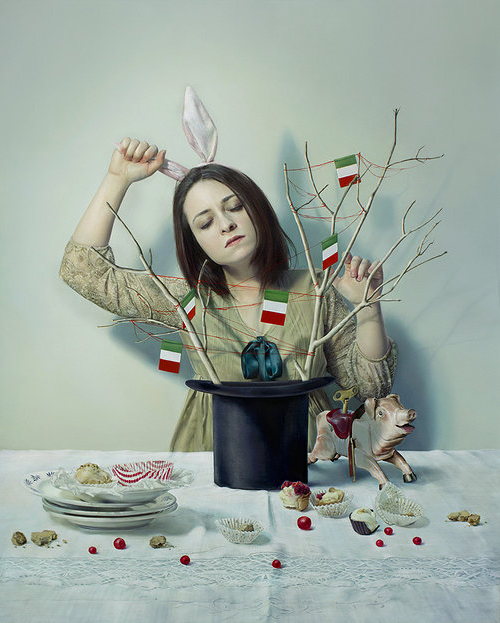
Another figural painter I enjoyed was Chinese artist Cui Jingzhe. Everything about Jingzhe’s work is delicate; from the fine paper he uses, to his gentle lines, to the softness of the subjects themselves, each element contributes to the airy, feminine quality. I’m not sure what else to say about these pieces except that they are just really beautiful and formally impressive. Jingzhe has created his own brand of Chinese pinup girls.
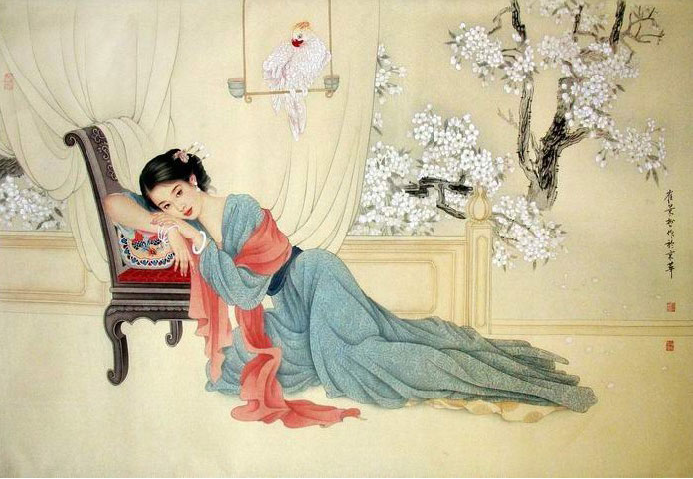
Though there was an abundance of figural painters (because really, that is what sells), there were a few abstract painters who I felt were making some interesting work. Lindsay Cowles says on her website her work is inspired by her “life as a Southerner, New Yorker, and Californian.” I wish she would elaborate on that because that actually sounds pretty intriguing. It is pretty obvious from both her booth and website that Cowles is concerned with the marketing and selling of her work, and I can’t blame her. It is hard out there for an artist. Despite this, I find her work formally beautiful and more complex than simple interior design marketing. The layers of color from neutral to hot pink, demonstrate a gestural, frantic, “down and dirty” quality harkening back to abstract expressionism.
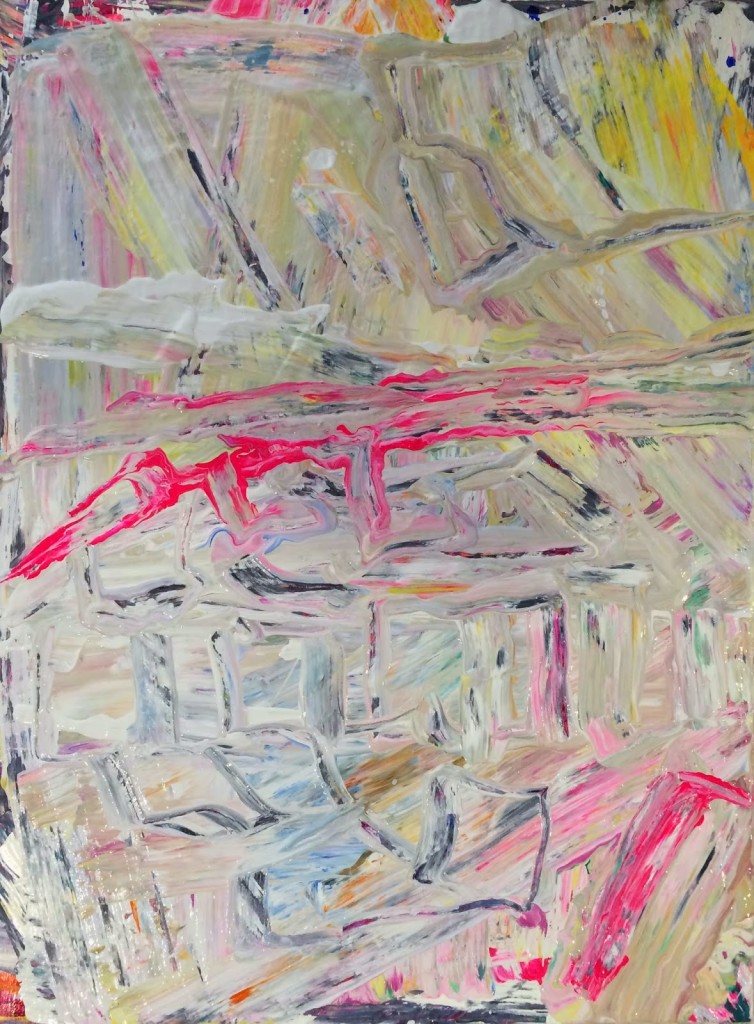
The last piece, and the most captivating one I saw, was Sam Talbot-Kelly’s sculpture Open, Sesame. The work features an animatronic sculpture that beckons to the viewer with one finger. She is draped in layers of red fabric, her face totally obscured. At her feet are two 19th century texts that reference diseases and their cures. In his statement for this sculpture, Talbot-Kelly says the passing of his mother inspired this work; this event led him to examine the transitory nature of human life and the connection we share to a larger, spiritual network. I can’t help but think of Jordan Wolfson’s recent robot piece at David Zwirner. My feelings about that work are complicated, and that perhaps should be saved for another time, but I will say that I find Talbot-Kelly’s sculpture far less sterile and “problematic.” The deeply personal touch that Talbot-Kelly has imbued the work with, the lovingly sewn dress and carefully crafted historical elements all made this my favorite piece at Artexpo.
